Tagged: Advice
How to Plan & Run a Successful Crowdfunding Campaign (part three)
- by Alyson Shane
Welcome back to the third instalment of the Crowdfunding Crash Course series!
This series of summary posts is designed to go over the lessons learned through more than a dozen interviews with crowdfunders during the course of this project, all with a little bit of insight from myself (of course.)
This instalment will focus on a few things to do after your campaign ends, so let's begin!
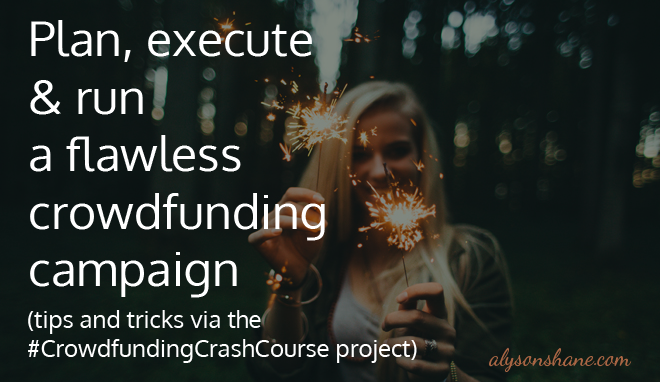
Thank Your Backers - No Matter What the Outcome
If your campaign succeeded, congratulations! You kicked some ass, took names, and raised your funding goal. At this point it's crucial to reach out to all of your backers at every level and thank them for contributing to your project and supporting you in your endeavours.
However, if your project was unsuccessful reach out anyway. Be honest with your backers. If you used Indiegogo or a service which allows you to keep the funds you raised, let them know how you plan to spend the money. If you used a service like Kickstarter and you know they'll be getting a refund, reach out and thank them sincerely. If you can, let them know what your next steps are and how they can continue to follow and support your project beyond the campaign.
Remove a Failed Kickstarter Campaign Before It Ends
If you're using Kickstarter and you know a few days before your campaign end date that you're not going to meet your funding goals, shutter your campaign and regroup before it ends. Otherwise you'll be left with a dead, unfinished campaign that will sit on Kickstarter indefinitely.
This was one of the things that Meghan Athavale mentioned in her interview. She said that initially she tried to raise funds using Kickstarter, but didn't plan enough and unfortunately the first time around her team didn't meet their funding goals.
However, what she didn't realize was that she couldn't remove her failed campaign after it ended, which means that when she re-launched an Indiegogo campaign, even though she was significantly more prepared and met her funding goals this time, she still had an old, failed ghost of a campaign out in the ether of the internet. If you think that this is something that could cause issues for you in the future, cut your losses and end your campaign while you still have the chance.
Map It Out!
The overarching theme of this project seems to be plan as much as humanly possible (have you noticed?)
Do-to lists, checklists, all those tools come in handy when planning a campaign of any sort, but the old classic tool is still one of the best: a calendar with all of your important dates, milestones, and reminders plugged into it.
If you're a bit old school like me you might like to physically write things down when you plan, but if you'd like to keep things digital (way easier when working with a team) Indiegogo has a fabulous calendar tool which you can use to plan your campaign well in advance and make sure you don't miss any important dates or milestones.
It's also pretty helpful if you're new to this whole experience and are unsure of when you should be planning each step. Personally I think the timelines are a bit aggressive -I'd give myself a few months to adequately plan, instead of just a few weeks- but that's entirely up to you and how prepared you are!
Learn the Tools of the Trade
This factors into what we talked about in the 2nd recap post, where we discussed the importance of having a game plan to promote your campaign and manage it before you start. Doing your research into the best platforms and tools to help you craft, create, and distribute your message to the masses can make or break your campaign.
Below are a few great resources to get you started:
Video Creation & Editing: iMovie or Stupeflix
Video Hosting: Vimeo or YouTube
Landing Pages: Unbounce
Social Media Management: Hootsuite, Buffer, Crowdbooster, SocialFlow, Sprout Social
Link Shortening: Bit.ly, Snip.ly
Want even more?
I'm thrilled to announce that I'm in the process of putting together The Crowdfunding Crash Course eBook!
As I was putting together this post I found myself having to go back through posts and interviews I'd written, and sift through them to find the information I wanted. It was clunky, confusing at times, and not at all the kind of succinct, awesome experience that I want to provide for all of you.
So, with a very limited knowledge of iBooks Author, I set out on a quest to put together the most complete version of the Crowdfunding Crash Course project to date, all compiled in a handy little book for you to reference and use whenever you need!
The eBook is full of tips, tricks, breakdowns and, of course, the interviews from the Crowdfunding Crash Course Project. In addition to the information already available in post format, I'll be providing a more detailed breakdown and analysis of each campaign, as well as additional insights and advice to prepare for, and manage your campaign after it's ended.
The Crowdfunding Crash Course eBook will be available for free to all of my newsletter subscribers, make sure you sign up to get your hot little hands on one of the first copies!
I'm so excited to be sharing this news with you, and can't wait to get The Crowdfunding Crash Course eBook out there into the big, wide world!
xox
Alyson
How to Plan & Run a Successful Crowdfunding Campaign (part two)
- by Alyson Shane
Welcome back to the second instalment of the Crowdfunding Crash Course recap series!
In this series we'll be covering the lessons that the participants of the Crowdfunding Crash Course project shared with us, all summed up in a few handy posts (with some input from yours truly, of course.)
If you think you have an amazing idea that you have to share with the world, it might seem like crowdfunding is the easiest way to get your message out to a lot of people. Spoiler alert: it isn't. A successful crowdfunding campaign is rarely one that you can "set and forget" and takes about as much planning and preparation as a run-of-the-mill marketing campaign.
Honestly though, I didn't fully grasp any of this until I started this project. This is because a good crowdfunding campaign, like most things that are done well, looks pretty effortless.
This realization is why I decided to start doing recap posts - to help dispel some myths about the process, and to break down the steps to take to make sure that your campaign is every bit as successful as it can be!

Do Your Research
Luckily for us, neither Kickstarter nor Indiegogo, the two most popular crowdfunding platforms, automatically remove campaigns once they've ended. This is great news for you, a budding crowdfunder, because it means that there's a wide variety of projects to explore and research. If you're lucky, there may even be a few similar to what you're planning to do, which can be great opportunities for some research.
For example, if you're planning a crowdfunding campaign to raise money for your nonprofit which will develop a product to be used in developing countries, you'd be doing yourself a disservice if you didn't take a look at the SolarPuff Kickstarter campaign page, and that's just one that we know about! A quick search for "nonprofits" will bring up a variety of campaigns for you to draw inspiration from.
The best part about the fact that all those older campaigns are still out there is that it gives you an idea as to how different campaigns managed to meet their funding goals... or if they didn't.
Some things to check for are:
- The quality and length of of the video
- Message and story
- The strength of the pitch (or the "ask")
- The kinds of perks offered at the start
- If any perks were added any later into the campaign
- If the campaign met it's funding goals (or if it didn't, how close it came)
Crowdfunding, as an industry, is unusually transparent because everything is out there in the open for all to see. Campaigns, by their nature, are public, and the information is there for you to learn from. All you have to do is take the time to do your research!

Pick the Best Platform to Suit You
The two major crowdfunding platforms out there are Kickstarter and Indiegogo, and because the interviews I did for this project happened to all be on either platform, these are the two we'll focus on right now.
Kickstarter is an "all or nothing platform" which means that if you set your crowdfunding goal as $100,00.00 and you only manage to raise $95,000.00, you don't get to keep any of it. In fact, when someone donates to your campaign their credit card isn't charged until your campaign reaches it's goal.
Indiegogo has what's called a "flexible funding system," which means that as backers donate to the campaign, the organizers get that money in real time. It also means that they get to keep the money that's been backed so far, regardless of whether or not you reach your goals. Indiegogo also allows you extend the life of your campaign, and change your funding goals halfway through your campaign.
Kickstarter dwarfs Indiegogo in a few key ways: it attracts more traffic, it features a "Projects We Love" newsletter and feature area on their site which can propel a floundering project well past it's target goal, and it attracts more pledges, and pledges in higher amounts.
However, Indiegogo has it's strengths: it's had almost 100,000 more successfully completed campaigns than Kickstarter; this is because when a campaign is about to expire and hasn't reached it's funding goal, many people pull them from Kickstarter before the end-date.
Ultimately the platform you choose is up to you! Do your research and invest your time in the platform that you think will do the following:
- Allow you to provide the kinds of rewards you'd like
- Has funding options that you're comfortable with
- Provides you with ways to promote your campaign
Work With a Team
One of the striking things about the interviews I did for this project was the sheer amount of man-power that goes into planning, executing, and managing a crowdfunding campaign.
Running a campaign takes a lot of time and effort. You have to plan before your launch, manage the marketing leading up to and during the campaign, communicate with funders, answer questions, and any variety of things that might pop up or be unique to your project.
According to Indiegogo, crowdfunders who worked with teams of three or more raised over three times as many funds as campaigners who chose to go at it alone. This is likely because having more people on your team means you have an extended network of people to share it with, and potential funders!
It never hurts to have each member of your team promoting your campaign on their own individual social media feeds, and to their friends and family; even more incentive to surround yourself with a great team of people to help your campaign be a success!
Communicate Consistently
Nothing makes a backer feel like they wasted their money more than a campaign that goes dark the moment you donate. Besides that, you don't want people to forget about your campaign the second they give you money, do you? Of course not, which is why communicating is so, so important.
One of the most effective things you can do to keep things fresh is to keep updating your campaign page after you launch. This is essential! Regardless of the type of project you're trying to fund, you want to keep your backers in the loop every step away (this plays into what i was saying earlier about crowdfunding being an extremely "transparent" industry).
This means updating your page when you've hit important milestones, have press mentions, or new perks that you've added after the campaign launch (more on that in the next instalment, I promise!).
Updates to your campaign will automatically be emailed to anyone who contributes, making this step a total breeze and the easiest way to communicate with your backers post-launch. It also helps your backers know that you appreciate them and their efforts in helping you succeed.

On average, most crowdfunding campaigns post at least four updates over the course of their campaign, and these posts could cover a wide variety of topics, such as:
- Important funding milestones (30%, 50%, etc)
- New perks and incentives
- Profiles of that terrific team you've put together
- Behind-the-scenes looks at your process, product development, etc
- Press coverage
- and more!
Staying in touch with your backers is key, and can often help put you over the top of your funding goals during those final, stressful days of your campaign. If you send an update to your backers which reads "only $200 to go until we've met our goal!" and that backer is emotionally (and financially, now) invested in seeing your campaign succeed, they're much more likely to forward the email to others and ask friends to donate to that awesome, super-cool campaign, too!
Is That It?
Heck no! There's still more to cover, so make sure you check back to the final instalment of the Crowdfunding Crash Course Recap Series
This post is part of a series. For all of the Crowdfunding Crash Course interviews and summary posts, visit the Projects section of my site!
How to Stay Connected as a Busy Couple (Plus an Exciting Giveaway!)
- by Alyson Shane
When you're in a long-term relationship it can be easy for the magic to fade away. Conversations rife with sparks eventually become lacklustre discussions and you find yourself spending more time less time lookin' fine and more time in that baggy old ugly T-shirt you got from your work several years ago (team building exercise '99!)
Staying connected can be enough of a challenge for most couples, but when you're trying to maintain a healthy, happy relationship while also balancing a crazy professional career, side projects, spending time with friends and family, and all the other good stuff that comes with being a responsible, driven adult, it can seem even more taxing to spend time keeping your relationship kickass.
Since the past few months have been such a whirlwind for both John and I, I figured I'd take a moment on a laid-back (almost) long-weekend Friday afternoon to reflect and share some insight into what's worked for us so far:

Learn Your Love Language
A few weeks ago I was browsing Reddit, and I came across a thread where one of the posters talked about couples' "love languages," and how understanding how both parties in a relationship express their affection is a key component to you both feeling loved.
Here's an example: I like to clean, and one of the ways that I demonstrate my love is by taking care of chores like laundry, dishes and etc which I know John doesn't like doing. I show my love by making his life easier. John, on the other hand, shows his love by telling me every day, singing songs to me and holding my hand, giving me hugs, being silly, etc.
Many people in my situation would just assume that he's lazy, or doesn't care about helping me, but what's actually going on is that I'm basing my expectations for his behaviour on how I behave, not how he behaves. It's important to understand and recognize this distinction.
When we take the time to understand how both parties express their love it makes communicating a million times easier, and nobody feels neglected or put-out by their partner's behaviour.
The test I'm talking about is called The 5 Love Languages and you can take it here.
Practice Active Listening
When the day is over and both your heads are swimming with information from your respective busy days, it can be tempting to want to zone the hell out and not dive into a deep discussion. However, it's important to ask your partner how their day went and actually listen to the words coming out of their mouth.
It can be tempting to nod your head and give the token "yeah, that's good" reply, but (spoiler alert) people can tell when you're placating them, and it's pretty disrespectful to your partner to tune them out while they tell you about what happened that day.
The best way to avoid the classic "mmhmm, that's nice dear" reply is to practice active listening. Active listening is when you listen to someone and then reply by repeating back what you've heard, either by re-stating or paraphrasing what you've heard in your own words.
Not only does this show your partner that you give a shit about what they've said, it also helps clarify the message and meaning, and make sure there's no confusion.
If you're feeling overwhelmed at the end of the day (as I sometimes am) it's totally okay to say "hey, I need some mental downtime, can we chat in a bit?" and then go for a run, or take a bubble bath, or read, or whatever you need to do to de-frag your brain. As long as that communication is there and your partner feels listened to and valued, that's what counts.
Schedule Some Downtime
One of the most difficult things for super-busy couples to manage is getting some freaking downtime. When you're both managing extremely demanding careers, going out to events several times a week, working on side projects, and maintaining a social life, it can be extremely difficult to find time to just hang out.
Admittedly, I really struggle with having "downtime" which doesn't really help. My idea of downtime is usually doing projects around the house, writing, or doing other things that need doing.
Sometimes though, you have to set aside some time and just hang out with each other and enjoy each other's company. This could mean anything: read books together, watch a movie, make dinner, play video games... whatever classifies as "downtime" for you, do that and do it as often as you can.
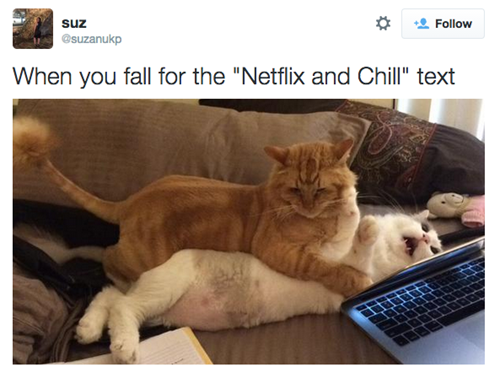
Hook Up (aka "Netflix & Chill")
I don't want to get into too much racy stuff here, but staying physically connected is such a huge part of any romantic relationship, and unfortunately it's one of the first things that seems to evaporate the second couples start to get overwhelmed in other areas of their lives.
I've experienced this personally, and can attest to the fact that when your physical relationship starts to wane, eventually so too does your attraction to your partner, and eventually any romantic interest you may have had goes away as well. At that point you might as well call it quits because you're basically just friends at that point (or roommates, if you live together.)
So the next free evening you have available schedule some time with your partner put on a movie that you've both seen a million times before (you know the one) and "chill."
Plan Dates
When you're busy almost every night of the week it can seem impossible to figure out when to make the time (or the effort, really) to go out for a real, legitimate, you-and-your-significant-other date but it's so, so important.
Courtship is crucial to maintaining all that other good stuff I talked about earlier in this post. Courting isn't just about showing up with flowers (though that helps), it's about putting in the effort, making plans, dressing up and going somewhere spectacular where you have an amazing time together.
We should always strive to be 'dating' our partner, no matter how long we've been with that person.
One of my favourite dates was the day last summer when John and I biked to Assiniboine Park and explored the zoo together. We packed a picnic, a bottle of wine, and the book we were reading together and had a tremendous afternoon.
Do John and I have any dates planned in the near future? I'm glad you asked! Besides going to Gogol Bordello for my birthday (OMG!) we're going to be checking out Mahlerfest, presented by the Winnipeg Symphony Orchestra.
Even better, the good people at the WSO have given me an additional pair to give away to one of my readers!

Here are the deets (via the Winnipeg Symphony Orchestra website)
MAHLER’S 10TH: THE LAST WORD
At the time of his death Mahler had completed two movements of his Tenth Symphony and sketched the remaining movements. A performing version was made by Deryck Cooke: “A masterpiece of reconstruction,” Neville Cardus wrote in The Guardian, “sounding the voice of Mahler and of nobody else.” We are proud to present a WSO premiere, hosted by the eminent writer and Mahler scholar Norman Lebrecht.
This performance also features a Viennese-style masquerade following the performance, which the audience is invited to attend.
Want to win tickets to Mahlerfest? Of course you do!
Here's how you do it: leave a comment and tell me about your favourite date.
It could be anything - maybe you went skiing and sipped hot chocolate together; maybe you went to the library and left Post-Its in all the books you've read; maybe you skipped stones on a pond and made out beneath a huge oak tree. Whatever! I want to hear it!
I'll be choosing a winner by October 26th, which gives you plenty of time to dig through your box of memories as well as make sure your calendar is clear on the 31st.
Good luck!
10 Tips on Working from Home
- by Alyson Shane
Today marks the beginning of my fourth month of running my business full-time from the comfort of my own home. That's a whole fiscal quarter, you guys! Wahoo!
While I realize that four months isn't a terribly long time to be working from home, it's certainly taken some getting used to. Luckily, from everything that I've read on the topic and the people I've spoken to on this topic, I started off doing the right stuff.
So, to celebrate my first quarter of small business-ownership, here are 10 tips for working from the comfort of your own home:
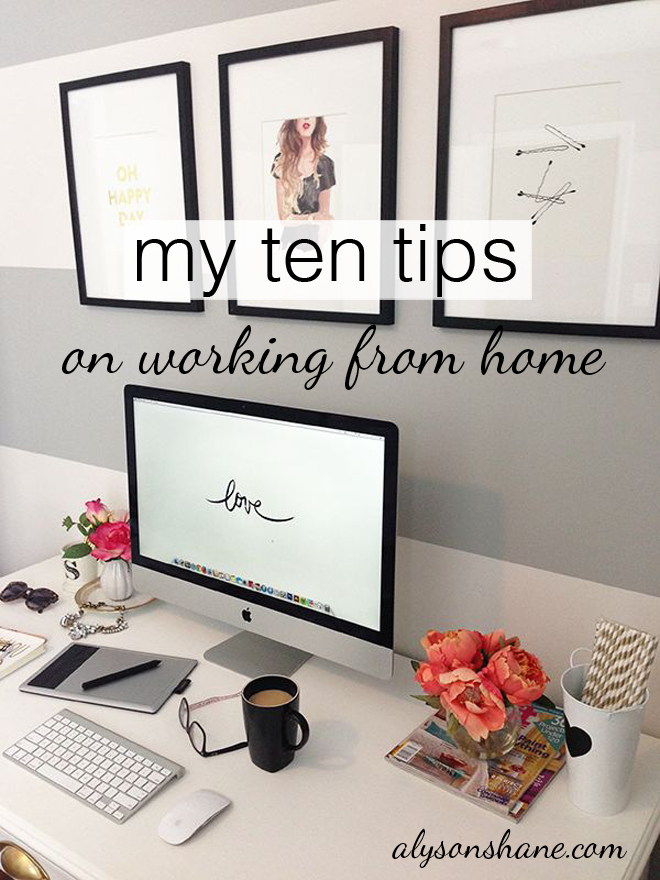
1. Get dressed every day
Every morning I get up with John, shower, do my makeup as though I'm about to leave the house, and get dressed. There's something about going through my regular hair/makeup/clothes routine that puts me in a better mindset to start working.
I've tested this theory a few times on purpose and find that I slack off, dilly-dally, and otherwise procrastinate way harder when I'm wearing my yoga pants and a tank top than when I've got on an outfit that I'd wear in an office. I don't dress business casual (never really have, to be honest) but even jeans and a t-shirt make a huge difference.
2. Have a designated work area
Though my "work area" is technically in a shared living space - namely, the living room - I have a desk setup with my iMac, notebooks, and etc where I sit when I'm working. I make a point to only use my iMac for work-related stuff whenever possible; I find that having a mental divide between being on my laptop and sitting at my desk helps tremendously with my productivity.
I've also tested this theory quite a bit, and discovered that when I was sitting on the couch with my laptop I was was less productive - maybe it's because my couch is so comfortable, or because Toulouse likes to sit on my keyboard, but whatever it is, having a designated workspace puts me in "work" mode.
3. Set "work hours" and stick to them
This point plays into my earlier point about having a "space" for work. While the nature of what I do requires me to be available 24/7 to manage my client's communities, respond to questions and etc, I have "office" hours between approximately 8am - 5pm each day where I handle the bulk of my content creation, scheduling, copywriting, responding to and on-boarding clients, and working on prospective accounts.
I'm lucky that John leaves for the Campfire office each morning, which I think helps add a pronounced "start" and "finish" to my days (I generally stop working when he gets home) but this is something that I think everyone who works from home should implement for themselves as well. It's that much easier to put work down and not get sucked into working 24/7 when you have a definite start and end time during the week.
4. Get outside
I didn't fully appreciate how much stimulus I got during my commute to and from my 9-5 back when I was working in an office, and adjusting to being home alone five days a week has taken some serious getting used to.
I've coped in a few ways: when it's warm I sit outside with my laptop on the deck, I go to the gym in the mornings which means I can either walk or take the bus with John, and I frequently step out during the day to run errands like grab coffee and get groceries so I don't feel so cooped-up. Even just walking to Thom Bargen, grabbing a coffee and having a short chat with a barrista is enough to help me feel social.
5. See your friends
Friends, and being social, matter so much more when you spend most of your time by yourself. This is a pretty obvious statement, but when you spend the majority of your time alone it's easy to feel like you're disconnected from the world, and simply having the opportunity to talk to people face-to-face who aren't clients starts to become so much more valuable.
Obviously I hang out with John every day, but I also see at a handful of my friends a week, whether it's for coffee dates, gym workout sessions, or just grabbing a pint together after we're both finished work. Having the opportunity to unwind and talk about my work, challenges, and successes with others matters so much more when you're workin' it alone most of the time.
6. Take advantage of your flexibility
One of the best parts about being your own boss is being able to set your own schedule, and adapt it to what best suits you. Understanding when you're most productive and building your schedule to best suit your workflow, instead of being expected to be "on" consistently between specific set hours, is an important part of this process.
For example, nowadays I'm able to go to the gym in the mornings. Back when I worked in an office, even though I started at 9am it was still too tough to get to the gym, work out, shower and make it to the office in time. Nowadays when I hit the gym I'm usually back home around 10am, which is totally fine because I'm much more productive in the afternoons than I am in the mornings, anyway, and I work with added energy and focus because I just came in from working out.
I don't do this every day, and I'd say that my days are pretty 50/50 where I'm out doing errands or going to the gym before/after work, and ones where I'm parked at my desk all day long, but having the option for variety really helps. It means that I can optimize my time to get things done at my own pace and schedule without worrying about a boss who is going to judge me from being away from my desk.
7. Be smart with your money
When I was working at my 9-5 I barely checked my bank balance, but now that I work from home I look at my bank account every day. I also have to track stuff like General Sales Tax (GST), my RRSP contributions, my business expenses, and my taxes.**
I've found that not having a steady paycheque coming every two weeks like clockwork has changed the way that I think about money, and I actually like that it's made me more aware of how much money I have at all times. I also think about the value of my money differently - I'm more prone to spend it on experiences, rather than stuff. I'm also lucky that my idea of "going out" usually is limited to going to a pub somewhere, having a pint with a friend, and hanging out, rather than going for an extravagant meal.
Either way, it's important to realize the ways that working from home, and the feeling of wanting to "get out" affect how you think about the money you've got in the bank. Be as frugal as possible without neglecting yourself and your social life.
**For the love of god people, always keep your taxes in a separate account so that you can pay your taxes when you get your assessment. Don't screw yourself over!
8. Eat healthy
I've never really been one of those people who kept snacks at the office, but now that I work at home and my refrigerator stocked with tasty food is literally in the next room, it's often really hard to resist the temptation to wander over and start munching away. This is especially true when I'm procrastinating, or working through a problem or idea.
As a result, I try to have tasty snacks like pickled veggies, olives, bananas with peanut butter, and cheese and crackers around. I can "graze," procrastinate or think, and not feel guilty about inhaling a loaf of bread by accident.
9. Keep your workspace clean
I'm a neat freak anyway so this goes without saying for me, but it's easy to let the rest of your life clutter into your workspace and feel overwhelming. Especially when you work from home, saying "oh, I'll tidy my desk" can quickly snowball into tidying up multiple rooms (trust me, this has happened.)
I always remove my coffee thermos, plates, and any unnecessary papers from my desk at the end of the day so that the next morning I can return to it and not feel overwhelmed with having to clean up my mess in addition to getting my work done.
10. Use a to-do list
I've blogged about my checklist before, but I wanted to mention it again because when you work from home you're only accountable to yourself. In an office we try to keep our Reddit browsing or tweeting to a minimum, lest we get caught and subsequently reprimanded by our overseer, but it can be that much easier to get distracted, or feel overwhelmed without a looming presence directing you with what to do next.
Sure, I have a multitude of bosses in the form of clients, but day-to-day they don't really care how I spend my time, as long as I'm doing what I need to do (which is so liberating, you guys.) I could write a blog post at 2am and go shopping the next day and nobody would blink an eye.
While that kind of freedom is really incredible, it also means that I have to make a point to stay accountable to myself each day since I don't have a single boss breathing down my neck. Having a checklist, which I refer back to both daily and weekly, helps a lot.
Do you have any tips for working from home? I'd love to hear them! Leave them in the comments or tweet at me on Twitter!
Simple Steps to Build Your Personal Brand
- by Alyson Shane
If you're anything like me, you spend an egregious amount of time online chatting, sharing comments, articles and opinions, and connecting with other people.
If you don't, or if you're just starting to, then you may not be familiar with the concept of personal branding, and how it can help you achieve your personal and business goals.
What Is Personal Branding?
Your personal brand is how people in your community and the world at large think about you. It's the sum-total of all of your activity online, which helps paint a picture of who you are to the people who know you through online social channels like Facebook, Twitter, LinkedIn, Pinterest (to name a few), and your website, if you've got one.
Having an understanding of personal branding is a powerful tool because it allows you to actively shape how people see you, and gives a focus and direction of the tone, quality, and direction of the content you share.
In this post we're going to cover a few simple ways that you can build a strong personal brand which not only reflects the fabulous person that you are, but also how it can help you achieve your goals!
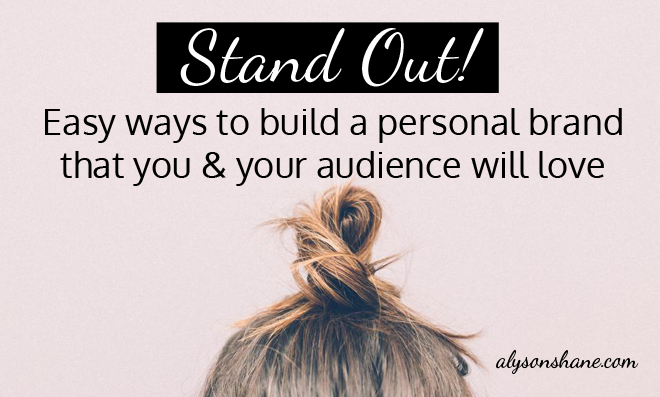
Build a Website That Reflects Who You Are
I'd argue that the most important piece of the puzzle regarding your personal brand is having a website that you love. Something sleek, cool, easy-to-navigate and which accurately represents who you are to the world.
Your website should have an active blog, and should act as the hub for all of your activity online, with your social media feeds regularly linking back to it. Blogging not only helps with SEO (search engine optimization) which is how people find your website, but also helps people gain a better understanding of who you are through what you write and share.
Back in the day people (like me) wrote lifestyle blogs, which were basically like online journals and didn't really exist to serve a purpose other than somewhere for us to publish our thoughts. These days, though lifestyle blogs still exist, they aren't as frequent, and blogging has taken on a more professional quality.
If you're a professional, blogging regularly about events in your industry and sharing ideas and opinions is a great way to help your audience understand who you are. Though I'd argue that lifestyle blogging even has a place, too! While blogging about your industry is great, people still want to see who you are, which is why sharing posts about things you've done, events you've attended, or experiences that you've had are also valuable content.
Explore & Be Your Authentic Self
I write about authenticity a lot, and one of the reasons that I keep coming back to it is because who you are and how you craft your personal brand can make or break your future prospects. if people think you suck, they won't want to work with you.
Luckily being your authentic self is easy: you just have to be who you are.
I've read suggestions on other blogs and websites that suggest trying to craft a "fake" version of yourself; someone who reacts to things differently than you normally would, and makes statements that contradict how you actually feel about an issue. I totally disagree with these suggestions.
Personal branding is about nurturing the best parts of ourselves, being honest and vulnerable, and sharing those parts of ourselves with the world. We're all flawed human beings who are in a constant state of growth, and part of crafting a personal brand is being open about who we are, in as much (or as little) detail as we're comfortable sharing.
Some key things that your personal brand helps people understand are:
- What do you believe?
- What are your goals and ambitions?
- What are your strengths and weaknesses?
- What kind of client/contractor/employee/business owner are you?
- On a scale of 1-10, how much do you love inspirational sloths?

(okay, that last one was just me)
Remember: people connect with other people. Being authentic builds trust.
If you don't appear to be a real human being, or seem like you're faking your way through everything (aka being full of shit) how will people trust you it they don't feel like they know the real you?
One last thing:
Being your authentic self also means that you'll rub people the wrong way. There's always going to be someone out there, naysaying whatever you blog about, share, or reflect on publicly. That's okay. To quote the ever-wise Taylor Swift "the haters gonna hate, hate, hate, hate, hate."
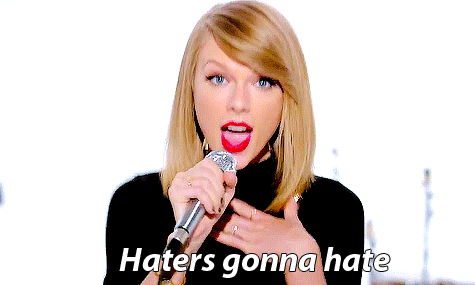
Get Speaking
One of the easiest ways to build up your personal brand is to speak publicly about what you do. Whether it's at a conference, a local meetup, or to a classroom full of students, speaking about what you do not only builds awareness of you and your personal brand, but (bonus!) it'll help you be better at what you do.
If you're not used to speaking it can be really daunting, but a bit of practice and some great reference material (I like to make my own slides using Keynote) you'll have a whip-smart presentation in no time. Additionally, having to break down complex ideas, concepts, or speak about your strategy or workflow can be immensely helpful in helping you develop clearer way to communicate it to everyone else.
Case in point: last April I spoke about the importance of social media at the Manitoba Trucking Association's Driving the Future conference. While I discuss social media with my peers and clients on a regular basis, having to explain things like Twitter to a non-user helped me develop a better understanding of how to convey important ideas. That presentation is what led me to develop my Twitter for Beginners series. How cool!
When you speak do so from a place of knowledge and power and show that you know what you're talking about. Speaking engagements not only help people understand what you do and who you are, but they're also terrific confidence-builders, too. Win/win!
Write About What You Do & Participate in Interviews
Thought leadership articles (like the one you're reading) which provide advice, insight and reflection into what you do help give you major cred. Thought leadership articles not only give you the opportunity to discuss what you do from the comfort of your own keyboard, but can also provide valuable research and learning opportunities as you fact-check and find references to back yourself up, as well (cha-ching!)
I'm a big proponent of knowledge sharing, and I believe that it's single best way to make people aware of what I do. Not just that, but it helps people, too! How awesome is that?
Regularly writing authentic, helpful content is one of the best tools at your disposal to help build awareness of your personal brand, and establish trust between yourself and your audience.
Bonus points:
The more content you share, the more likely it becomes that people will reach out to you for interviews, commentary, advice, collaborative opportunities, and work!
Maintain Your Online Presence
If you don't have social media profiles, now is the time to start setting them up! While publishing thoughtful content on your website is great, you need to have an active presence on relevant social media sites in order to share your content and push people back to the 'hub' of your personal brand (aka your website.)
Here are some questions to ask yourself when going over your social media profiles:
- Do they all contain relevant information?
- Do they link back to your website?
- Are you presenting yourself in the best way possible?*
- Are you using high-quality photos?
- Are you interacting with others and sharing their content in addition to your own?
* What I mean is this: no ranting, no sub-tweeting/vaguebooking, no snarky comments, no racist/prejudiced/inflammatory remarks. While jokes, comments and etc may be okay in person and around specific friends, this type of behaviour is something that you should actively avoid doing whenever possible. It just looks bad, m'kay?
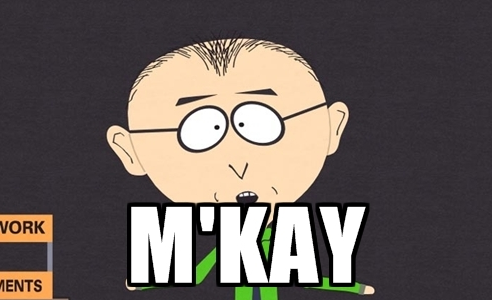
Never Stop Learning
This applies no matter what industry you're in. The world is changing quickly, and we all have a responsibility to stay as informed and up-to-date on the latest changes and trends in our respective industries.
Building a strong personal brand takes time, and if you don't stay relevant then you'll fall by the wayside and all of that time you spent building it up will be for nothing. I regularly hit up sites like Hacker News and Social Media Examiner to stay informed of goings-on in my industry - I'd be lost without them!
Bonus: sharing about what you've learned, or writing a blog post about a topic you've been reading about it a great way to create some original content. Remember: people are coming to your website because they want to hear your thoughts; they could easily go anywhere else, but they came to you. Make sure you're rewarding your audience with well-researched and current opinions and facts.
The more time you spend working on and crafting your personal brand, the stronger your image will be and the sooner opportunities will start coming your way based on people's perceptions of you. Your audience will see you as a sincere, intelligent person and will be breaking down the door to work with you.
Did I miss anything, or do you have something to add to this post? If so, leave a comment,shoot me an email, or tweet at me on Twitter!
5 Essential Content Marketing Habits
- by Alyson Shane
Content marketing is one of the move valuable tools at your disposal to add value to your marketing strategy. Good content educates your audience, prospects potential clients, and when done correctly does a powerful job of advertising your brand message.
However, if you're managing multiple accounts at once and want to stay as organized and focused as possible, it's necessary to start developing the right habits as early as possible. Below are a few key things that I've learned which have helped me save my sanity, and be better at what I do.
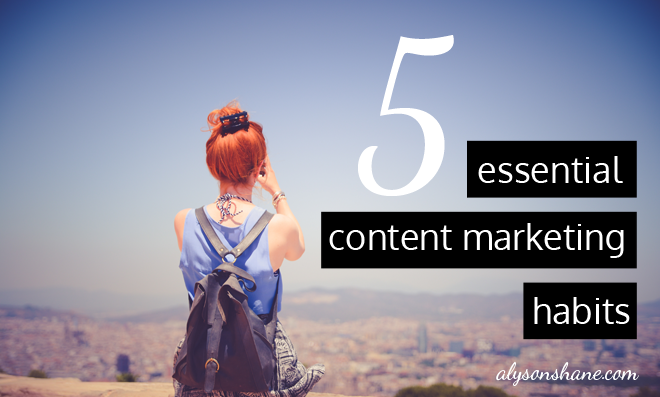
1. Track Your To-Dos
I've mentioned my daily checklist in a previous post, but having a concrete, written plan for what you need to do each day/week/month/etc is unbelievably helpful. This is especially true when you're working on a project which requires a team effort, and a bit of project management.
My favourite tool for this purpose is Trello because it's super-easy to learn to use, has a simple design based on columns and checklists, and allows you to drag specific tasks "bubbles" around between columns, so everyone can see where you are on a specific project.
Here's an example via a quick Google Image search to give you an idea of what it looks like:
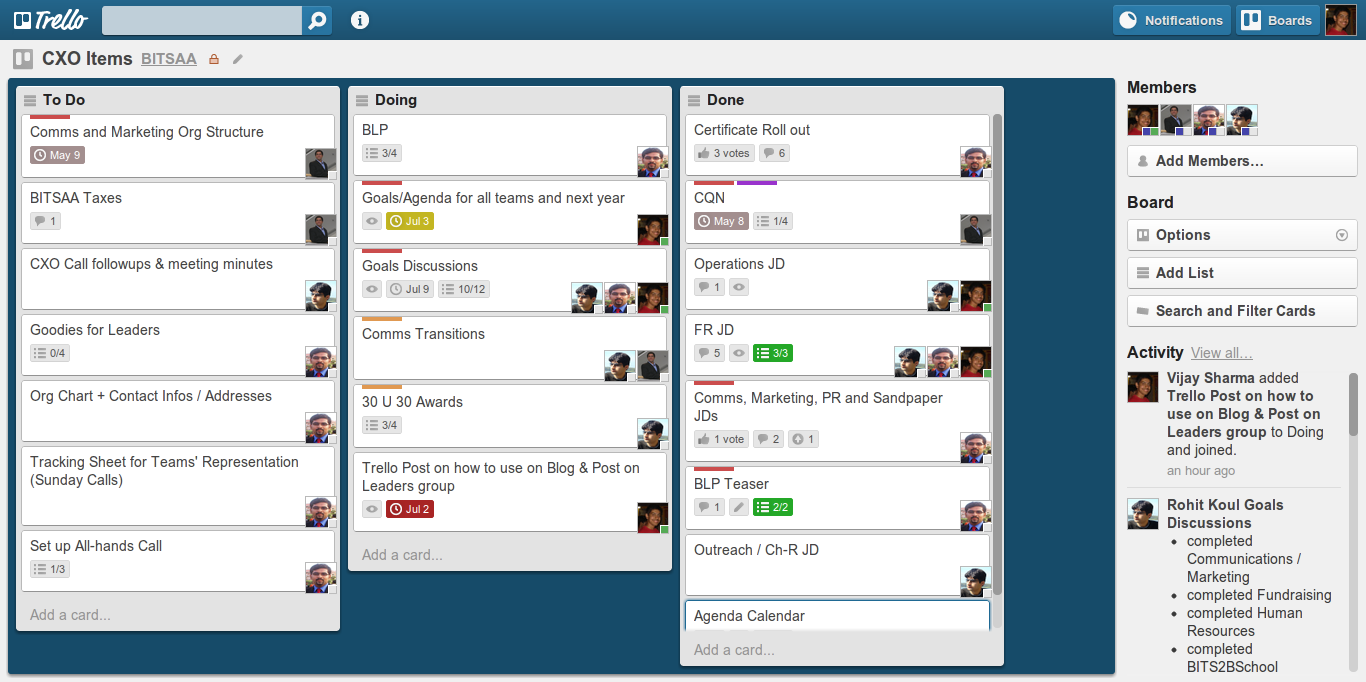
Having tools like Trello (or Asana, or Slack, whatever your preference) helps with communication in teams who may not be in the same office, or even the same country, and allows you to easily keep track of who is working on which portion of the project, and where they're at. Being able to access this stuff at-a-glance is super easy, and saves a ton of time.
2. Establish Milestone and Conversion Goals
Before you sit down and start tweeting or posting, establish what your definition of "successful" looks like. Is it 2,000 newsletter subscribers by Thanksgiving? To speak at a nationwide conference next year? Maybe hit a million visitors to your website this month?
Whatever the case, by developing a clear vision of success and what it looks like not only helps you plan how you will achieve those goals, but also helps you have a clear game plan which can be adapted to deal with any unexpected changes.
Conversions are the best way to measure the success of your campaign (think bread-crumb trail) and anything that you do which leads a user down your breadcrumb trail is worth tracking.
3. Analyze Behaviours and Achievements
Behaviours are the actions that visitors take once they arrive at your website, and achievements are when they behave based on the breadcrumbs that you left for them to follow.
By keeping track of how people move through your (or a client's) website, you can gain valuable information as to how people are getting there, and how they're moving around. Ideally, they'll follow a set of pre-defined steps that you've put in place in order to get them to visit a particular page, or buy a product.
So whenever you identify a new measurable behaviour (maybe your traffic goes up, your website's ranking increases, your click-through rate increases, etc) you can analyze the behaviours that led to the increase, and refine and revise when necessary to make sure things keep going well.
4. Get In the Cloud
This took me longer to get into the habit of doing than I'd like to admit, but saving all your documents, contracts, photos, and work in the cloud (I use Google Drive) is the only way to be truly effective wherever you are, and saves a ton of headache down the road.
Here's an example: I invoiced a client before I went out of town, but they sent me an email a few days later and said that they needed me to re-submit it. So instead of having to worry about re-creating an invoice from scratch because my original document was on my iMac back in Winnipeg, I opened the Google Drive app on my phone, found the invoice (I also have all of my invoice templates saved there, just in case) and re-shared it within the span of a few minutes.
It saved me a ton of time time and and I was able to avoid the headache and stress of re-creating an invoice to make sure I got paid when I was expecting to.
There is literally no excuse for you to not be using a cloud-based sharing service, so get on it!
5. Report & Tweak
Though many people are starting to see the value of of it, a lot of people still view content marketing and social media as a wishy-washy thing to spend money on, so us content marketers need to be able to prove our worth.
The best way to show value is through reporting - showing successes, areas of improvement, engagement levels, and providing recommendations on how to move forward. It also helps with long-term planning, as reports can indicate shifts in behaviour and engagement over time, which allows you to identify things that succeeded, and things that didn't.
Reporting can be (okay, almost always is) a chore. It's boring, but by taking the time to put together a comprehensive report you can effectively demonstrate your value, as well as open up lines of communication with your clients. Reporting builds trust and helps clients feel like they've got a good grasp of what's happening, even if they're totally hands-off day-to-day.
Developing the right habits from the get-go allows you to not only feel more organized, but it actually makes you better at your job, which is good news for both you and your clients.
Did I miss anything from this list? Do you have anything you'd like to add? If so, leave a comment, shoot me an email, or tweet at me on Twitter!
Why My Autumn Mantra is "Less Is More"
- by Alyson Shane
It's been a whirlwind few weeks and somehow a few days ago I woke up and it was already September. How the heck did that happen?! I feel like I blinked and already I'm transitioning to warmer drinks, longer sleeves, and yellowing leaves.
Anyway, this is generally the time of year when businesses begin to really kick things into high gear - everyone is coming back from the cottage, the lake, or an extended vacation, and are starting to plan the big push for the fall/winter season. With that comes a slew of work, usually in the form of new projects, tasks, meetings, conferences, Skype calls, phone calls, coffee dates, you name it.
With all this is can be difficult not to get too caught up in the minutiae of everything. It can be hard not to become overwhelmed, but it can also become increasingly difficult to stay focused and streamlined.
Which is why my autumn mantra is "less is more."

What does that mean?
What I mean is this: more information doesn't mean better information.
However, when you're a business owner it can be easy to get lost in all the details. You start to feel the need to communicate every thought, idea, brainstorm, detail, etc with everyone involved in your project, which can actually waste time and cause miscommunications, which set you even further back from your original goals.
This is because we're often led to believe that including every single detail, or poring over something exhaustively, or even outlining things in crazy detail is the best way to convey what we have to say.
- Facts are what matter. That the right information stated in a clear and concise manner will get people to act and agree.
- Everyone wants all the details.
- People will pay attention because they know that they should. They will read the entirety of your email, pay attention to every detail of your phone call or meeting... you get the idea.
- People will take the time to learn something properly.
If there's one thing that I've learned in the past while it's that none of these things are true.
Here's what's actually true:
- People make decisions based largely on what they feel, regardless of what the facts are.
- People will gloss over details. Be ready (and willing) to repeat them.
- People only pay attention to what matters to them. If your email is too long, they'll skim it; if your meeting lasts a while, they won't remember every detail.
- People will half-ass most things unless it is required of them.
This is in no way a slag against anyone - this is just how we are. We only give 100% of our attention to things that we're emotionally and presently invested in, which usually isn't your email (it's probably what they're doing this weekend, or that funny gif they saw).
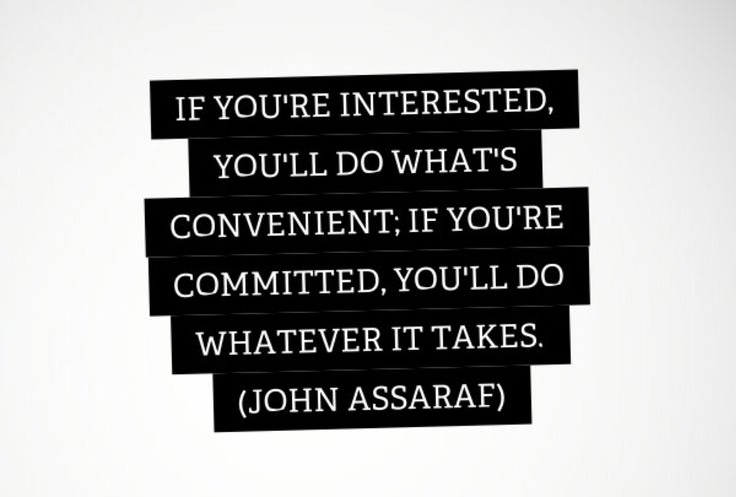
Okay, but why does this matter? I hear you asking.
What can you do?
Here are some steps you can take (and that I'm trying to take) to get around these issues:
Say the important stuff at the beginning of your email. Guys, I struggle with this one so hard, but it's true: put the important stuff at the beginning of your email or it'll never get read.
Send follow-up emails after a meeting. Sure, you took notes, the other people in attendance took notes... but are they all the same? Do they all outline the same goals, objectives and responsibilities? You have no way of knowing, so send a quick summary email detailing the meeting. That way you can clear up any miscommunications and potentially save yourself some hassle down the line.
Break longer emails down into easily readable chunks. If you have to write out a longer email, use bold text to indicate new sections, and try to break things down into lists if possible. If someone opens your email and is greeted with a wall of text they're less likely to spend the time to read the whole thing.
What does this mean for your audience?
If we think about our content strategy with the same focus -namely, that people have limited attention spans and only pay attention to things that interest them- we can start to draw some conclusions which we can apply to the kind of information that we share.
Let's look at a few questions we can ask ourselves:
- What can you tell your audience (besides facts) which will mean something to them?
- Which important details can you focus on to get your point across?
- How can you share content in an original and engaging way to get people interested?
- How can you lead people to the same conclusions or end-goals as you?
By twisting the perspective around and thinking about how you can share more with less, you begin to ask questions which put you in your audience's shoes (spoiler alert: this helps you be better at what you do!)
Awesome! Now what?
Now you can start to apply your new mantra to everything you do! Use the "less is more" mantra to send better emails, have less lengthy and time-consuming meetings and follow-ups, and convey yourself better to your colleagues, clients, and your community.
Got questions? I've got answers! Leave your queries in the comments, tweet at me, or send me an email to continue the conversation!
Live Your Daydream: How to Make a Living Doing What You Love
- by Alyson Shane
Things are starting to ramp up over here at Shaner HQ and lately it seems like I've been getting inundated with people asking me for advice on how to make the leap from boring office job to the exciting (and mildly terrifying) world of running your own business.
While I love talking to everyone individually (I'm a huge chatterbox) it seems like a lot of the same questions keep coming up: how can you figure out what to do? How can you get from 9-5 to full-time business owner? What are the challenges along the way? and so on.
So it seems best to address them in the best way I know how: a blog post, of course!
This isn't going to be a bubblegum session where we talk about the magical dream that is running your own business (though it is pretty kickass); today I want to talk to you about the real-life things that you need to do to start doing what you love for a living.
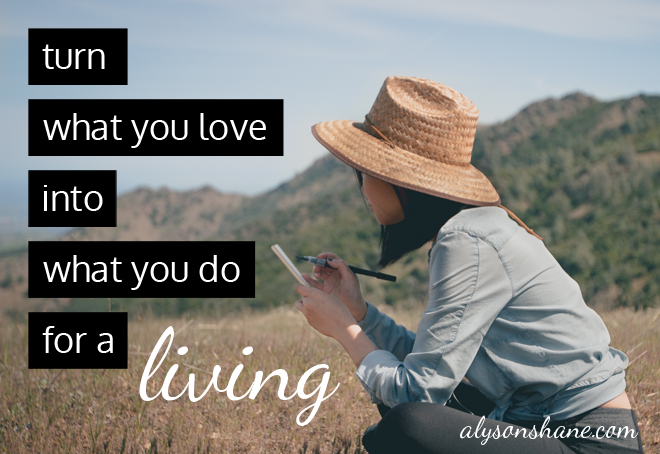
Figure out what you want to do
So you've got a full-time job that doesn't excite you and you know that you want to run your own business instead, but where the heck do you start? First, figure out the thing that excites you the most and focus as much of your time and energy on learning as much about it as you can.
Maybe you love writing and want to be a copywriter, maybe you love building websites and want to help people build websites for their businesses, or maybe you love knitting awesome sweaters for your cat. Who knows. What matters is that you love doing it, it excites you, and you're dedicated to turning that passion into your livelihood.
The best (and safest) way to start working towards your goal of being a full-time businessperson is to start small. Spend a few hours a week honing your craft, reach out and try to get to know influencers and other people who might be able to help you, find a mentor if possible, and try to gather a small roster of clients.
By having a few clients on the side you can safely get a taste for what your full-time work will be like, start to understand the ins and outs of client relationships, and spend some time thinking long and hard about whether or not these experiences are indicative of the kind of lifestyle that you want to have.
Start to plan
So you've spent some time learning, testing the waters, and have decided to make the plunge into the crazy world of running your own business. Good for you! But before you go quitting your 9-5 all willy-nilly, you need get your ducks in a row first.
Take a step back from your life and look critically at where you are: where are you working? Do you like where you work, and how long are you planning to work there? Do you have any debt, and what are your goals for paying it off? What are your basic costs of living? You get the idea.
Next, sit down and prioritize your goals. For me, my biggest goal was to have as much of my Visa and my student debt paid off before I quit as possible. I made the decision to leave my job in December of 2014, and I spent the next several months working full-time, collecting clients on the side, and using the money that I was making as a freelancer to aggressively pay off my debt. Being able to tackle this huge weight gave me some breathing room when I finally started running my business full-time, and I wish I could go back in time and high-five my past self for being so forward-thinking. I really did myself a solid.
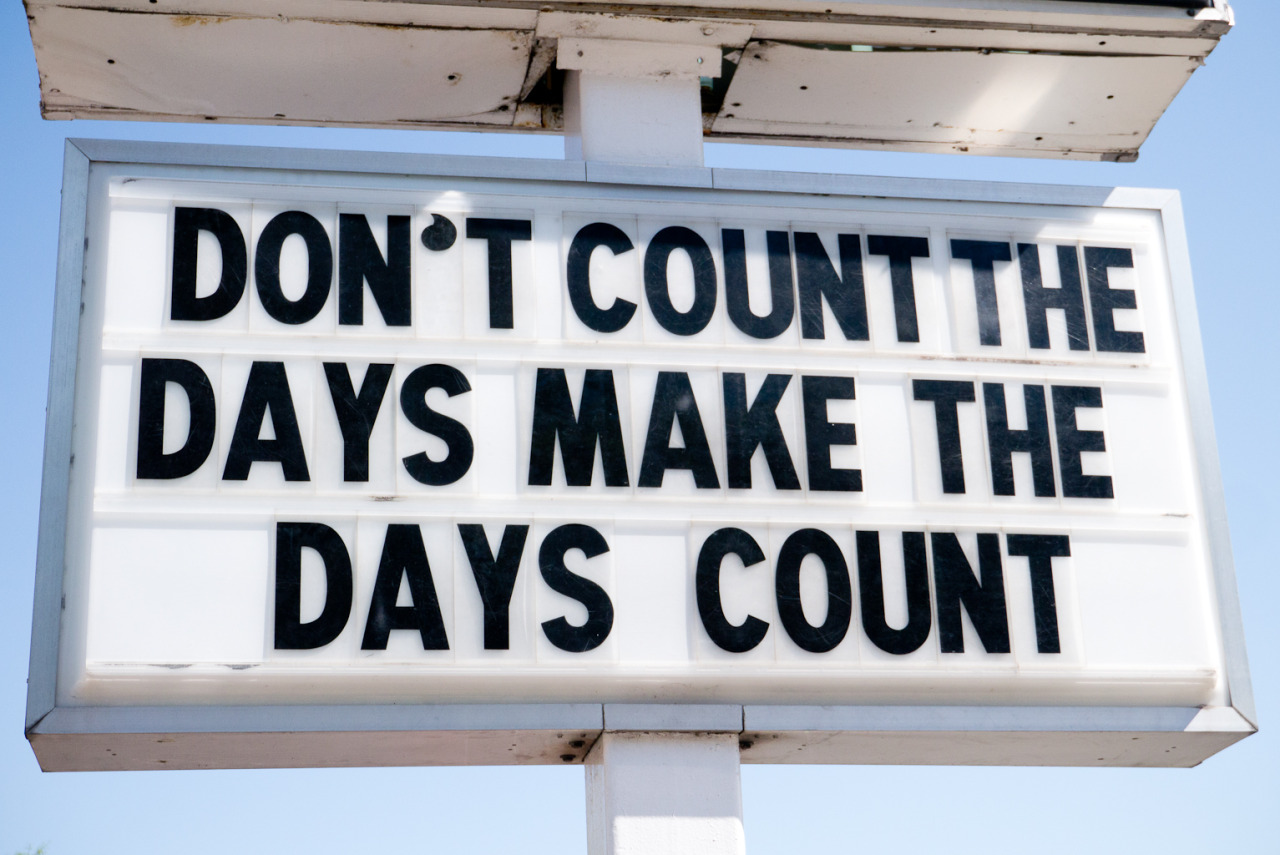
So is there something that you'd like to accomplish, or start doing before you start running your own business? It doesn't have to be debt-related; it could be anything from taking that amazing trip, to buying that new laptop, to meeting with a financial advisor. Whatever it is, do your best to do it before you go solo, because you're going to want to hit the ground running.
Now is also the time to start thinking about the details of your business. By having a deep and thought-out understanding of who you are, what you offer, and the kind of business you want to run before you get going full-time will save you a lot of hassle down the line, and will help you stay laser-focused on your goals.
Some questions to ask yourself are:
- What specific services will I offer?
- What is my ideal number of clients?
- How much will I charge for my services?
- What kinds of contracts do I want to have (eg: recurring, one-time, etc)
- What is the basic monthly income that I need in order to survive?
- How will I find new clients? (eg: blogging, online promotion, Meetups, etc)
- How much money can I save before I quit, and how much runway* will that give me?
*Runway refers to the length of time that your business can exist without collecting any additional sources of income. So, if your client pool dries up, how long until you need to go back to a 9-5.
You get the idea. There are tons of other questions that you'll need to ask yourself that are more specific to your circumstances, but these should get you started.
Treat your goals like recipes
What I mean by this is do everything one step at a time. It can be totally overwhelming to look at all the things that you want to do, or that need to get done, and start to freak out internally because how the hell are you ever going to accomplish all that? By breaking it down, that's how.
Think about your biggest goal and write them down. What do they look like? Do you want to quit your office job by 2016? Be on the cover of your local paper? Land that dream client you've always hoped to work with? Write it all down in as much detail as you can think of.
Now that you've written it down, plot out all the steps that you need to take to achieve that goal and say them out loud as you write them. It sounds cheesy (I know) but it absolutely works. Seeing the words on the page and hearing your own voice saying them helps make those steps seem more real and attainable.
Now that you've set out your goals and broken them down into smaller, attainable steps, it's time to start chipping away at them.
Don't freak out when your plan goes awry
Remember how I said that I had those lofty goals of paying off all my debt before I became a full-time businesswoman? Yeah, that didn't happen. I've made a significant dent, but to quote John Steinbeck: "the best laid plans of mice and men often go awry", and things came to a head at my old job and I had to make an exit before I totally lost my mind. It was a bit sooner than I'd anticipated (by a few months) but by planning ahead and actively working towards this goal for several months beforehand I was in a much better position to start kicking ass and taking names right away.
Remember: just because your plan didn't execute perfectly doesn't mean you fucked up. It means you're human, and it just means that you have one more challenge to face (and overcome!) on your road to independent businessperson fabulousness. Do your best to plan what you can as far in advance as you're able, and when life tosses you a curve ball, you'll be ready to react.
Plan for the best & prepare for the worst.
Be honest with yourself about money
#RealTalk time: running your own business doesn't mean you'll be swimming in giant pools of cash mo-nay immediately. In fact, for most people it takes a long time, sometimes years, to start to really pull in a significant amount of income. Most of us, myself included, take giant pay hits, sacrifice our social lives, travel plans, and long-term goals like home ownership or even having a car because we want our runway to last as long as possible.
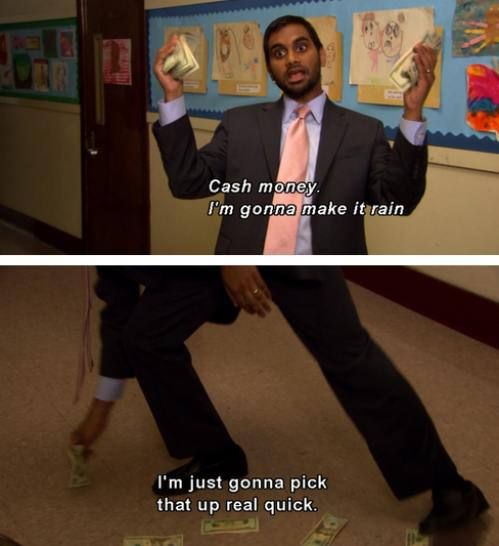
(this is an accurate depiction of what running your own business feels like)
If you've been smart and saving up, or you've got a big cash influx from a contract (or both, if you're lucky) for the love of god don't spend it all at once. I know how good it feels to look at your bank account and see all those dolla bills sitting there, but working for yourself is much more precarious than a 9-5. With a regular job you know you have income coming your way every two weeks (or whatever your pay schedule was) because it was on a schedule, so who cares if you spend a bit extra this weekend - you know exactly when the next influx of cash into your bank account is going to be.
Clients don't usually work that way, and it's not uncommon to wait several weeks for a payment, or for contracts dry up overnight. This is why keeping that runway as topped-up as possible is crucial.
Pound the pavement 24/7
I mean it. When you start running your own business the amount of contact that you need to have with other people (aka "exposure") needs to ramp up significantly. If you weren't active on your own blog, social media feeds, and out and about in your city, it's time to start putting yourself out there.
Believe me when I say this: the amount of work that you put into making sure people know who you are will have significant long-term benefits. It might take some time, but if you can start to develop a positive reputation as being "in the know" about your industry, people will start to defer to you, and eventually will start to refer you to others.
Last year I at one of my speaking engagements I mentioned that I'd been blogging for over a decade, and that experience is what helped me land the role I had at the time. I was speaking to first-year Creative Communications students, and one of them asked "why should I keep my profiles updated when I'm not looking for a new job?" My response to the student was "you never know when an opportunity will find you," and to that I'd like to add that when you run your own business you are always looking for a new job. Ideally you'd like to get yourself to a position where you're turning down work, but until you get there (and if you get there) you need to be as active at promoting yourself and your business as possible.
Ignore the haters
Like the old saying goes: haters gonna hate, and I guarantee you that from the second you mention that you're planning to start your own business there will be someone naysaying the idea right from the get-go. It might be a colleague, friend, family member, whoever. They might put down or dismiss your goals, and will likely do so under the guise of "being concerned" and "caring about your well-being." If anyone in your life says that to you, make a point to respond by saying "if you're concerned about my well-being, then help me achieve this goal because it will make me happy."
Remember: what you're doing takes guts and courage, but it's something that anybody can do if they just work hard enough. There will always be reasons and excuses to not pursue your dreams, and the longer you wait the more you'll begin to sound like everyone else.
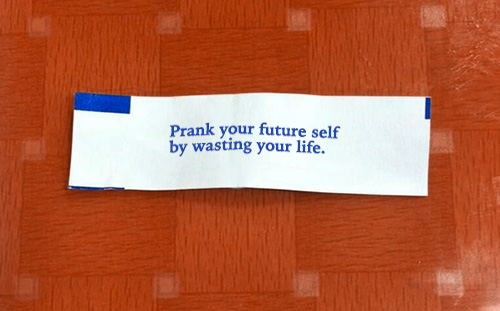
Do any of these phrases sound familiar?
"This job is as good as things are going to get."
"I don't have the time"
"I could never make money doing what I love"
"I have too many responsibilities and it's too late now"
I grew up hearing all sorts of BS like that, too. My dad has worked in the same department since his early twenties, my mom never went to college, and growing up I was surrounded by people who simply settled for their lot in life and never tried to push themselves (though man did they ever bemoan their circumstances.) These influences led me to believe that running a business was this unattainable and foolish goal, and something not worth pursuing.
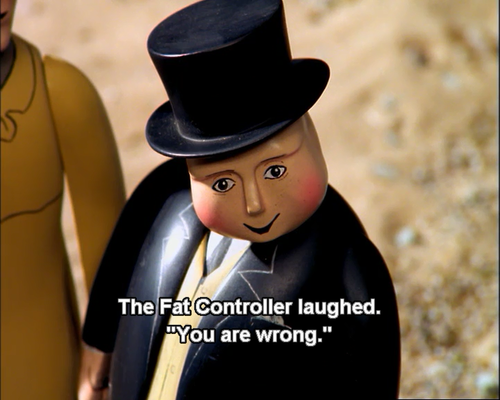
If there's anyone in your life echoing similar sentiments, tell them where to shove it. Life is too short to spend waiting around for the perfect time (which will never come) or trying to please everyone (which will never happen.) Here's a great quote on the matter:
“In every industry, there is an edge. In your business or personal life, it doesn’t matter– somewhere, there is a cliff. Most people don’t want to get to close to it, because they’re afraid they’ll fall off.
Thing is, the edge is where all the cool stuff happens. I know you don’t want to make a decision that is irrevocable and wrong– a decision from which you might never recover– that’s natural.
But guess what?
You are actually in the middle of an open field, inside your house, clutching your purse, crying like a little girl while looking at an edge you see on television.
In other words? You are nowhere near the goddamn edge.
It’s time you stopped being a fucking pussy.”
Julien Smith
Still feeling stuck? Get some help
If the idea of starting your own business is still way too daunting (and that's totally okay!) here are some great resources, articles, and people I'd recommend working with to help set you on the right track:
How to Do What You Love
An amazing article by YCombinator founder and overall genius Paul Graham
Kyla Roma
Business coach & strategist, and totally badass babe (also someone I know personally & adore)
Futurepreneur Canada
Tons of resources for mentors, coaches, funding options, etc (for Canadians)
Miracle Worker
8 week online course by Gala Darling & Ellen Fondiler
Seth Godin's Startup School
A free podcast series by Seth Godin, world-renowned marketing author, thinker and overall clever dude
Moz Learn
Learn everything there is to know about inbound marketing with this series (which I highly recommend)
Still have more questions about running your own business? Want me to expand on any of these topics? Shoot me an email, tweet at me, or let me know in the comments!
The Guide to Creating Killer Content
- by Alyson Shane

Once upon a time, back in the old days of 1996 Bill Gates wrote an article called Content is King. In it, he talks about the future of the internet, and how this new and exciting medium can be used to distribute information worldwide at basically zero cost. He also discussed how content isn't one single idea or thought, but rather the sum-total of everything that we share online, which can include ideas, products, and experiences.
Bill Gates is clearly a clever guy (duh) and his article is still as relevant today as it was when I first read it in Computer Science class. Nowadays, however, we have a multitude of ways and means to create and share content under the guise of your brand, professional or personal.
This can be anything including:
- Your website
- Blog posts
- Original images, photos and infographics
- Your profile photos across social networks
- Social media profiles including:
- Tweets on Twitter
- Facebook status updates
- Instagram photos
- Youtube or Vimeo videos
- Pinterest pins
- Google+ content
- LinkedIn updates
- Newsletter emails
- Emails you send to clients and colleagues
- Handouts, checklists, ebooks and resources you've created
- Other stuff of this nature (you get the drift)
The sum total of all of this stuff is how people will perceive you online, so your content really matters. People will click around to your Twitter, LinkedIn, Pinterest, website, and anywhere else you hang out online to try and suss out who you are and what they think of you.
The kind of content you share determines your value to other people, so today we're going to go through a few quick & dirty questions that you can ask yourself to make sure that you're creating and sharing the best possible content that helps people see who you really are, and adds value to your brand.
Does your content help others?
One of the biggest takeaways for me from the #SocialHour Twitter chat last week was that everyone indicated that they considered quality content to be helpful and informative. People are looking for posts, articles, and images that give them information and help them solve problems that can't be easily Googled.
This means that some of the best content you can create is the kind that answers questions, presents solutions to problems, and is otherwise generally helpful.
Here are some questions you can ask to determine some helpful content you can create:
- What kind of content do you like to read?
- What kind of content does your audience like?
- Hint: check stuff like your Twitter analytics to see what sorts of shared content resonate with your audience
- What sort of content are other businesses in your field sharing?
- What kinds of questions are being asked in blog comments, Twitter chats, etc that you can answer for my audience?
- What sorts of topics interest you, and would be fun to explore and learn in order to share?
- Can you turn any of these content ideas into long-term projects, video tutorials, printables, white papers, and other resources your audience can use?

Are you authentic?
Aka, does the way that you're presenting content online jive with who you are in real-life?
We all try to put forward the best versions of ourselves online - that's normal, don't worry about that pressure (we all feel it) - but when it comes to our content we can share heaps of information, articles, and posts without actually saying anything about who we are if we're afraid to do so.
However, the more 'real' we can be online, the more people will gravitate to us and hear what we want to say. This is because people (read: your audience and potential future clients) aren't just coming to you because you have encyclopedic knowledge of Google Analytics, or you knit the best cat sweaters. They're coming to you because the like who you are, and part of helping people get to know the real you is by sharing parts of your life with them.
Here are a few ways you can help people get to know you:
- Share funny or interesting photos of your life
- Include relevant stories in blog posts and status updates
- If you're feeling brave, share a recent struggle and what you've learned from it
- Share what you know (check out The Case for Knowledge Sharing for more on that topic)
Additionally - and I've said this before - make an honest and concerted effort to be positive online. Part of being authentic is sharing your struggles, challenges, and learning experiences, but don't actively badmouth, vaguebook, subtweet, or write passive-aggressive posts or emails about other businesses or people. We all have catty moments (we're human, after all) but you never know when it will come back to bite you.
Is your content entertaining?
#RealTalk time: you could be providing the best, most helpful content on the planet but if your posts read like cardboard and you sound like a Speak 'n Spell on video, nobody's going to want to take the time to hear what you have to say.
Here's an example: When I was in high school I had an amazing teacher named Mr. Kenny. He was so freakin' weird, you guys. He only cut his hair once a year for his wedding anniversary, wore a red nylon strap as a belt (the kind backpacks come with), and had less than a dozen tshirts, all of which he got for free and one of which said Is that your final antler? on it. He had the weirdest stories (like punching a kangaroo) and was always incredibly entertaining.
Mr. Kenny taught science (which I was embarrassingly bad at) and his students generally did really well because he was into what he was always super excited about what he was teaching, and he was such a character that he didn't have to work very hard to keep our attention.
Nowadays when I'm writing, or sharing things online, I try to channel Mr. Kenny's weirdness because I know that keeping people entertained is what keeps them coming back. It's not just about sharing information, it's about doing so in a way that keeps people interested and entertained.
How can you be more like Mr. Kenny? Ask your self some of these questions:
- What sorts of personal stories can you use to make your content more relatable?
- Can you work sarcasm and jokes into what you're writing?
- Can you find relevant interesting or funny photos, gifs, and videos to complement up your content?
- Would your audience appreciate seeing your goofy side?
Your turn!
Here are a few questions to get your brain waters going:
- What kind of content can you create this week that will benefit your brand?
- What fun, personal thing happened to you today that I can share with your audience?
- What are five topics I can write about this month that will benefit my audience?
Stumped for ideas? Leave a comment and let's chat about it!
Twitter for Beginners (Extra Credit): Delving deeper into Twitter Analytics
- by Alyson Shane
Since I wrapped up my Twitter for Beginners series I've had a handful of people email or or @mention me asking questions about Twitter Analytics.
We discussed the importance of analytics a bit in Part 3, but I thought that since it's come up a few times since, we could do a little 'extra credit' session and share a little more in-depth insight into how to read your analytics and make the most of the data!
What you're looking at
Before we delve too much into this post, let's take a second to go over some of the phrases we'll be discussing, and what they actually mean.
- Engagement: The total number of times someone interacted with your tweet (more on this in a few moments)
- Engagement rate: Number of engagements divided by impressions
- Impressions: Times someone saw your tweet in their timeline or search results
- Link clicks: Clicks on a URL or Card in the tweet
- Permalink clicks: Clicks on the tweet permalink
- User profile clicks: Clicks on your name, @handle, or profile photo
- Detail expands: Clicks on the tweet to view more details
- Embedded media clicks: Clicks to view a photo or video in the tweet
- Follows: Whenever you gained a new follower as the result of a tweet
Got it? Good. Let's go!
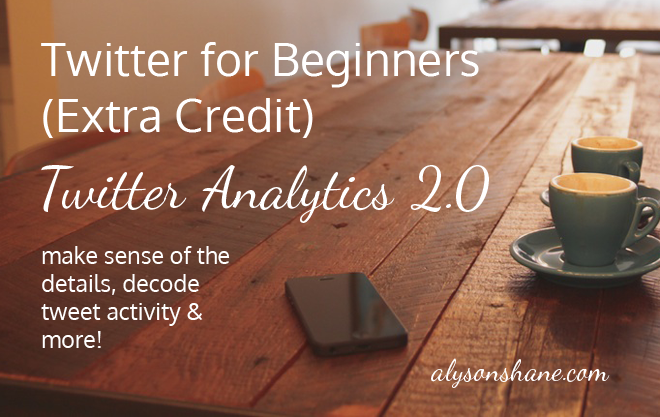
Get monthly reports
If you check out your account home you can see a quick overview of your Twitter stats. This page shows stuff like monthly average engagement rates, replies, profile visits, etc.
This is pretty standard stuff, but can be really helpful at-a-glance and is great when you need to reference something in a meeting (I do this with my clients often.) It's especially helpful because Twitter will calculate the percentage of increased or decreased engagement, so you can start to dig into why a particular set of tweets earned more impressions, or not.
If you want a more detailed explanation you can check out the Tweets page which shows you much more in-depth metrics. Clicking on a tweet will show you engagement broken down further into ReTweets, Favourites, Clicks on Media, Link Clicks and more.
Measure engagement
One of my favourite features on the home page is the 'Engagements' section on the right-hand side, which breaks down your engagement rate into easy-to-read graphs, percentage points, and an 'on average' recap which gives you a basic idea of how your tweets are performing each day on average.
What does engagement measure? Tons of stuff! Such as:
- ReTweets
- Replies
- Follows
- Favorites
- Links
- Cards
- Hashtags
- Embedded media clicks
- Username clicks
- Profile photo clicks
- Tweet expansions
This is, in my experience, the easiest way to pull pertinent information from Twitter. I use it whenever I'm putting together a report for a client, or when I want to see how I'm doing - once you're used to looking at it I'm sure you'll be just as obsessed with it as I am!
Find out who your influencers are
When you're on the Home page you can get insight into who your top followers are every month in terms of reach, as well as whose @mention to you created the most engagement. You can also look at the Followers page for your Top Follower, which gives you insight into the kinds of people who are following your biggest influencer.
For example, my highest mention this week was from my hilarious pal Kieran, who tweeted this during the recent Canadian Federal Leader's Debate:
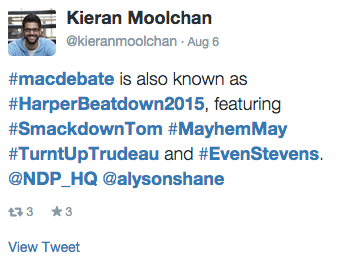
Who should you care? Understanding your top influencers helps you figure out the kinds of people who are active online (and who have active followers, themselves) and the types of people who are most actively engaging with and sharing your content. This type of information can also be helpful when trying to figure out someone to reach out to help you promote an project or collaborate together on an idea.
Get to know your community
If you're trying to grow your community in a specific direction the followers page is your new best friend! it's full of insight into people's top interests, their demographics, and how your followers have grown over time. This last bit of information is especially important if you publish original content regularly or participate in Twitter chats, because you can track what sorts of actions are the most effective at growing your community.
Here are a few key things to look for:
- Which topics your audience are most interested in
- Followers by region (ever have tweets that explode in popularity while you're asleep? This might be why)
- Which language they speak (mine's overwhelmingly English, which makes things easy)
- Who your followers follow (some competitive research never hurts)
See if your posts being re-shared or favourited
Whether or not a post gets Quoted or ReTweeted or Favourited tells a different kind of story about the tweet. Quoting and ReTweeting is generally a sign of value - someone felt that your content was valuable enough to share it with their audience, as well.
Favourites are like virtual fist-bumps: someone liked what you had to say and is giving you props by Favouriting your tweet.
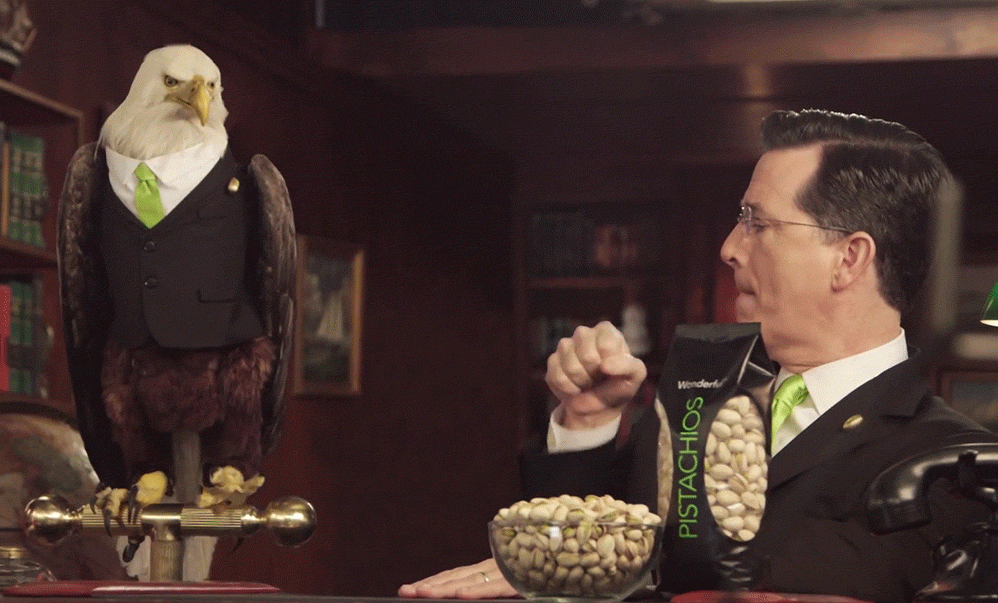
Figure out your "Favourited Rate"
I first read about the "Favourited" Rate theory over on Dave Shure of Evolving SEO's blog, and it totally changed the way that I thought about Favourites. I frequently hear people bemoan the fact that people "just favourite" a post instead of Quoting or ReTweeting it, but favourites can be just as insightful if you approach them this way:
Your followers are going to click 'favourite' for a bunch of reasons, but most likely they're expressing agreement with whatever you said in your tweet. If you track the types of posts that get the most Favourites, you can often find trends emerging which can help guide your decisions when trying to figure out the kind of content to share. This is a huge boon because your audience is directly (if not unintentionally) showing you the kind of content that they like best.
Your turn!
These are just a few of the way that Twitter Analytics can help you figure out how to make the most of your tweets and grow your audience. Go, check out what we've covered here today, and and if you'd like me to cover it drop me a line and I'll get cracking on the next Extra Credit instalment!
PS if we're not already pals on Twitter, make sure to follow me and connect with me there. I love chatting with my readers!
This post is part of the three part series on Twitter for Beginners. Make sure to read part one, part two, and part three as well! The entire series can be found here.
